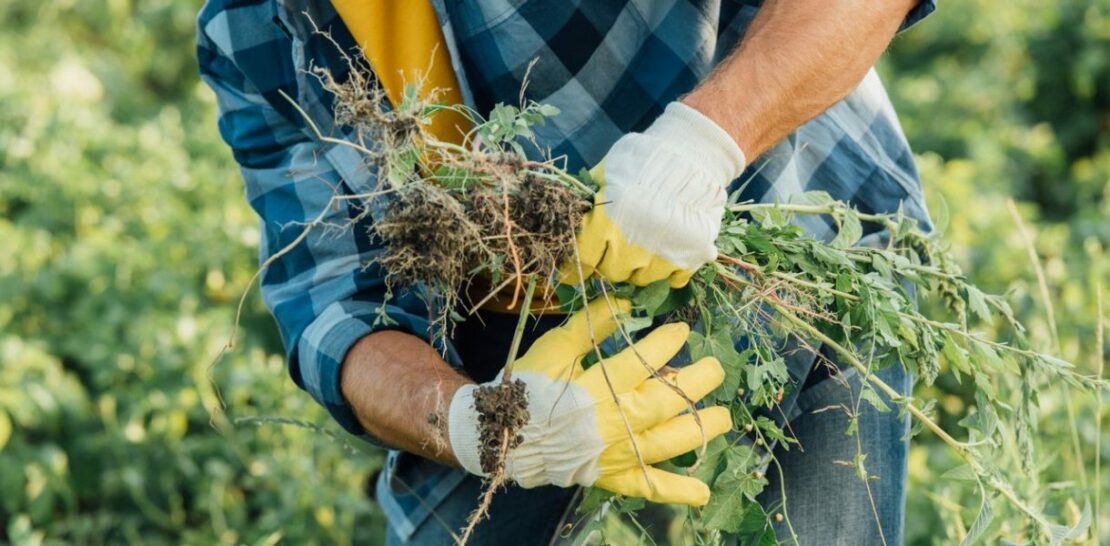As an avid gardener or landscaping enthusiast, you know that maintaining a healthy and beautiful garden is an ongoing battle against various elements, and weeds are among your most persistent and formidable foes.
Weeds can overrun your garden, steal nutrients and water from your beloved plants, and create an unsightly mess that’s difficult to manage.
But fear not, for we have gathered expert advice on how to wage an effective war against these unwelcome invaders.
In this comprehensive guide, we will arm you with five essential tips to help you prevail in your quest for a weed-free garden.
So, buckle up, and prepare to dive into the world of weed management!
1. Know Thy Enemy: Identifying Weeds and Understanding Their Growth Habits
Before you can effectively combat weeds, it’s essential to know what you’re up against. Identifying the types of weeds in your garden and understanding their growth habits is the first critical step in weed management.
There are three primary categories of weeds: annuals, biennials, and perennials. Each type has its unique life cycle and growth patterns, which will determine the most effective method for removal and prevention.
- Annual weeds complete their life cycle within one growing season, spreading their seeds and dying off. Examples include crabgrass, chickweed, and pigweed. As they are short-lived, removing them before they can spread their seeds is vital.
- Biennial weeds have a two-year life cycle. They grow vegetatively in their first year, then flower, produce seeds, and die in their second year. Common examples are Queen Anne’s lace and burdock. Preventing seed production is crucial in controlling biennial weeds.
- Perennial weeds can live for several years and often have deep, extensive root systems. They may reproduce by seed or vegetatively through rhizomes, stolons, or tubers. Dandelions, bindweed, and quackgrass are typical perennial weeds. They are the most challenging to eliminate, as they can regenerate from small pieces of root left in the soil.
By identifying the types of weeds in your garden and understanding their growth habits, you can tailor your weed-fighting strategies for maximum effectiveness.
2. Prevention Is the Best Medicine: Creating a Weed-Resistant Garden
An ounce of prevention is worth a pound of cure, especially when it comes to weed management. By creating a weed-resistant garden, you can significantly reduce the need for constant weed removal while promoting the health and vitality of your desired plants. Here are some tried-and-true techniques for preventing weed growth in your garden:
- Plant densely: Planting your desired plants close together can minimize the space available for weeds to grow. As your plants mature and fill in the gaps, they will compete with weeds for sunlight, water, and nutrients, making it difficult for weeds to establish themselves.
- Mulch: Applying a layer of mulch to your garden beds can suppress weed growth by blocking sunlight and making it difficult for weed seeds to germinate. Additionally, mulch helps retain soil moisture and adds organic matter as it decomposes, benefiting your desired plants.
- Ground covers: Using low-growing ground covers can help fill in empty spaces in your garden and crowd out potential weeds. Choose ground covers that are well-suited to your area and compatible with your garden’s existing plants.
- Regular maintenance: Routine garden maintenance, such as watering, fertilizing, and pruning, will ensure that your desired plants are healthy and robust, enabling them to outcompete weeds for valuable resources.
By designing and maintaining a weed-resistant garden, you can minimize the need for labor-intensive weed removal and spend more time enjoying the fruits of your labor.
3. Manual Labor: Hand-Pulling and Hoeing for Effective Weed Removal
When it comes to weed removal, sometimes the simplest methods can be the most effective. Hand-pulling and hoeing are classic, time-tested techniques that can help you maintain a weed-free garden without the need for chemicals or expensive tools.
Hand-pulling works best for weeds with shallow roots and is most effective when the soil is moist, as it allows for easier removal of the entireroot system. To hand-pull weeds, grasp the weed firmly at the base of the stem, close to the soil line, and gently pull upward with a slight twisting motion. Be sure to remove the entire root to prevent regrowth. Dispose of the pulled weeds properly, as some can still produce seeds or regenerate from root fragments.
Hoeing is an effective method for controlling weeds in larger garden areas or when hand-pulling is too time-consuming. A hoe can be used to sever the roots of weeds just below the soil surface, causing them to wither and die. Hoeing is most efficient when done on a hot, sunny day, as the exposed weed roots will quickly dry out and die. To avoid harming your desired plants, be cautious when hoeing near them and make shallow cuts in the soil.
While manual weed removal can be labor-intensive, it is an environmentally friendly and cost-effective approach to maintaining a weed-free garden. With persistence and regular attention, hand-pulling and hoeing can be a valuable part of your weed management arsenal.
4. Chemical Warfare: Selecting and Applying Herbicides Wisely
For particularly stubborn weeds or large-scale weed infestations, chemical control through the use of herbicides may be necessary. However, it is crucial to approach this method with caution, as improper use of herbicides can harm your desired plants and negatively impact the environment. To use herbicides effectively and responsibly, keep these important guidelines in mind:
Choose the right herbicide: Select a product that is specifically formulated to target the type of weeds you are dealing with and is safe for use around your desired plants. Be sure to read the label carefully and follow all directions and precautions. When in doubt, consult a professional or experienced gardener for advice.
Timing is key: Apply herbicides at the optimal stage of weed growth for maximum effectiveness. For example, pre-emergent herbicides should be applied before weed seeds germinate, while post-emergent herbicides should be used when weeds are actively growing but before they set seed.
Apply with precision: Use a targeted application method, such as a spot treatment or shielded sprayer, to ensure that the herbicide is only applied to the weeds and not your desired plants. Be cautious when applying herbicides on windy days, as the spray can drift and harm nearby plants.
Monitor and adjust: Keep an eye on your garden after applying herbicides to assess the effectiveness of the treatment and to watch for any unintended damage to your desired plants. If necessary, adjust your application methods or switch to a different product.
By selecting and applying herbicides wisely, you can effectively combat stubborn weeds while minimizing harm to your garden and the environment.
5. Strategic Planning: Developing a Long-Term Weed Management Plan
Ultimately, the key to winning the war against weeds is developing a comprehensive, long-term weed management plan. This plan should incorporate a combination of the strategies discussed above, as well as any other techniques tailored to your specific garden conditions and challenges. Consider the following components when creating your weed management plan:
- Prevention and maintenance: Prioritize weed-resistant garden design and regular upkeep to minimize the need for intensive weed removal efforts.
- Early detection and removal: Routinely inspect your garden for new weed growth and address any infestations promptly before they can spread.
- Integrated control methods: Employ a combination of manual, cultural, and chemical weed control techniques to tackle weeds from multiple angles and ensure their complete eradication.
- Continuous improvement: Regularly assess the effectiveness of your weed management strategies and make adjustments as needed to stay ahead of your weed adversaries.
By developing and implementing a well-rounded, adaptive weed management plan, you can stay one step ahead of weeds and maintain a healthy, vibrant garden for years to come.
In conclusion, successfully maintaining a weed-free garden requires knowledge, persistence, and a strategic approach. By identifying the types of weeds in your garden, implementing prevention measures, and employing a combination of manual, cultural, and chemical control methods, you can triumph in your battle against weeds. With these expert tips in hand, you are well on your way to mastering the art of garden warfare and enjoying the lush, weed-free landscape you’ve always dreamed of.




